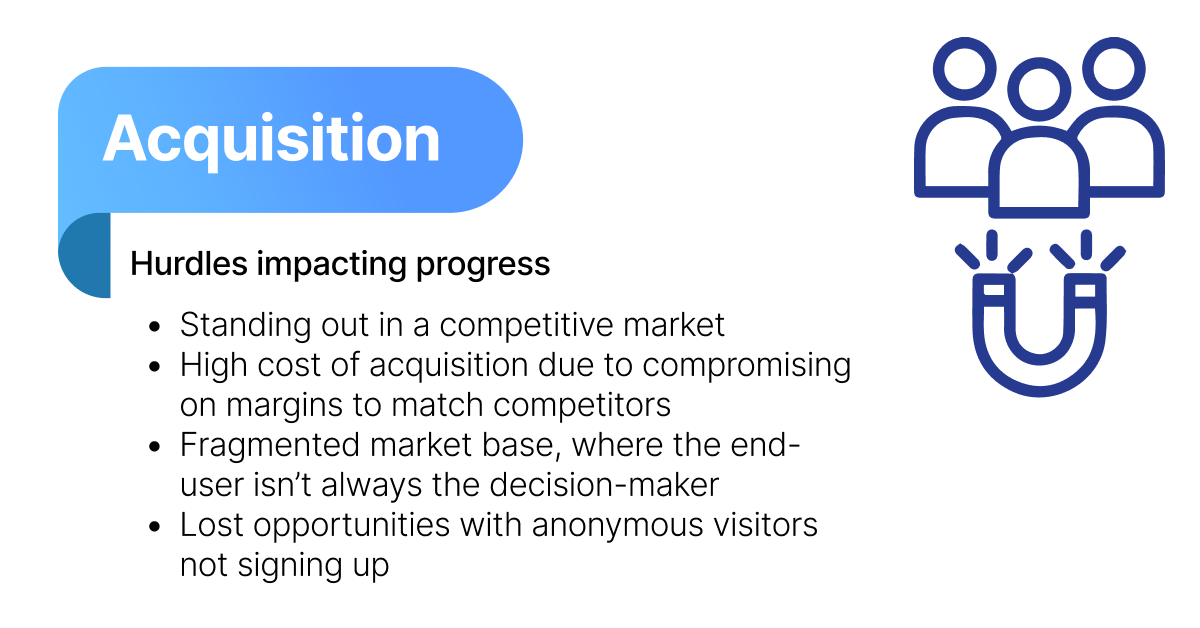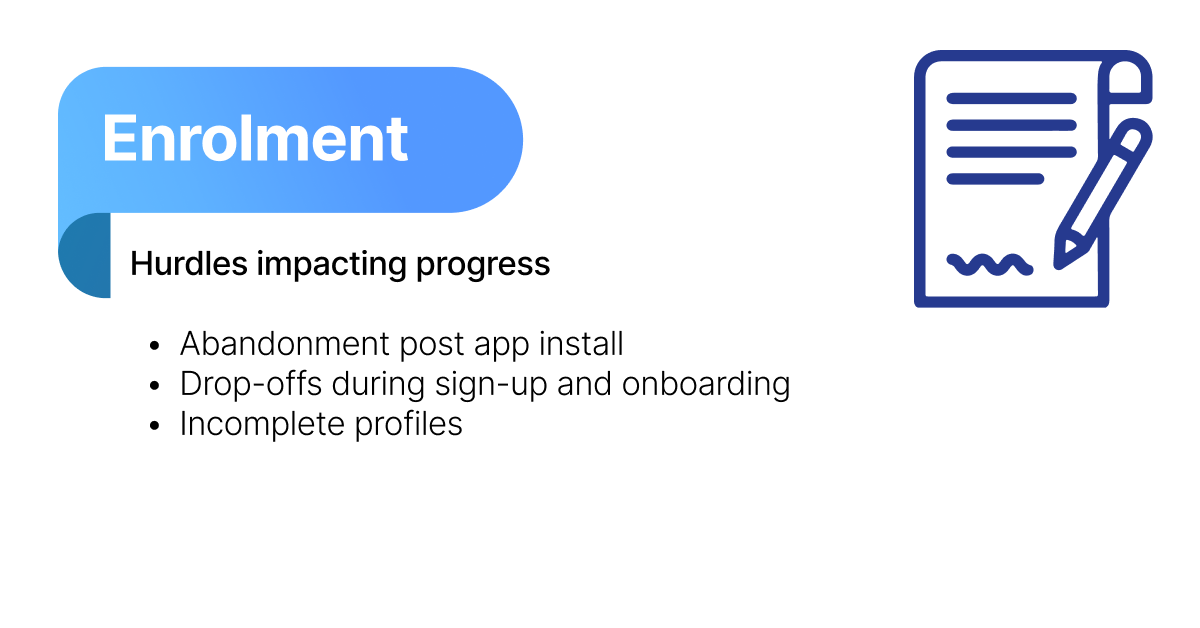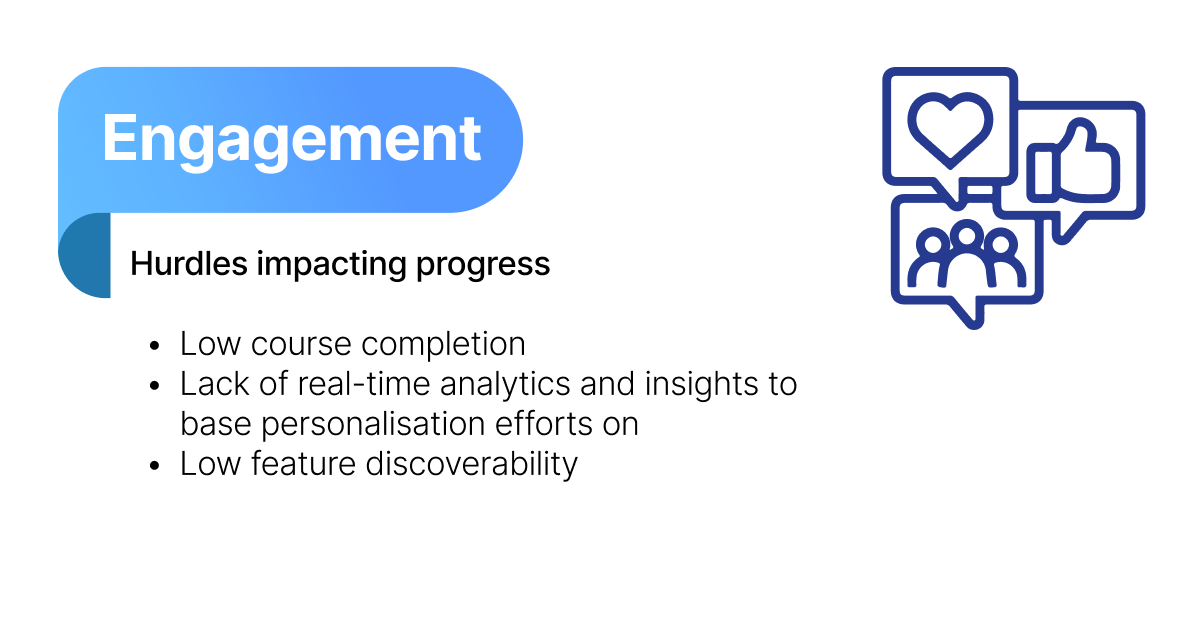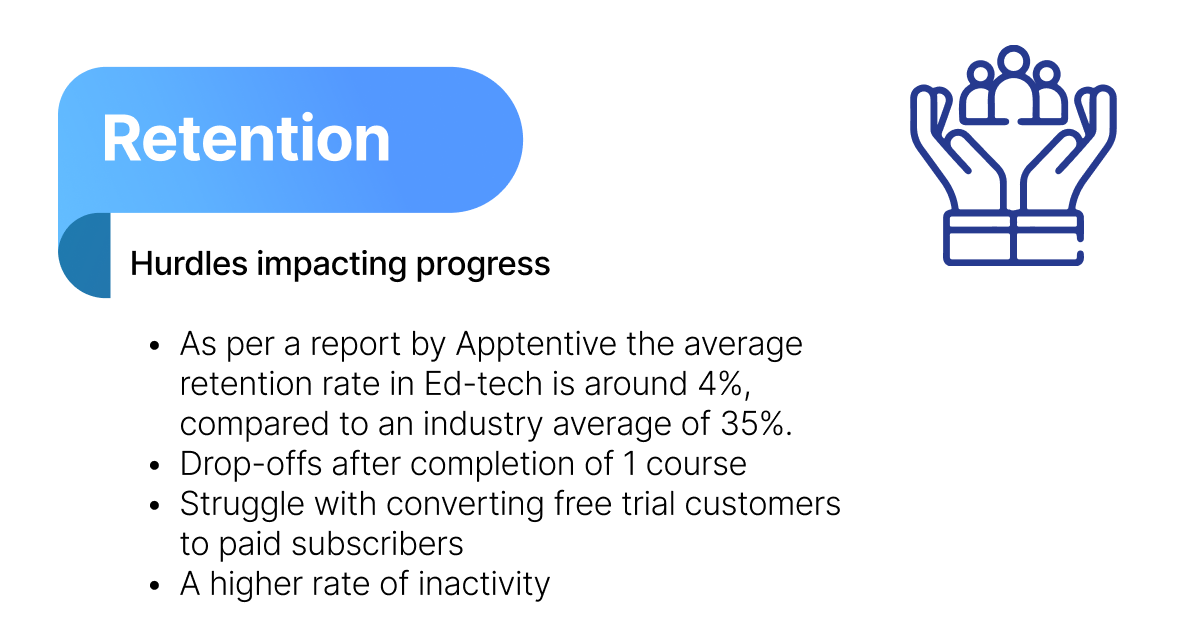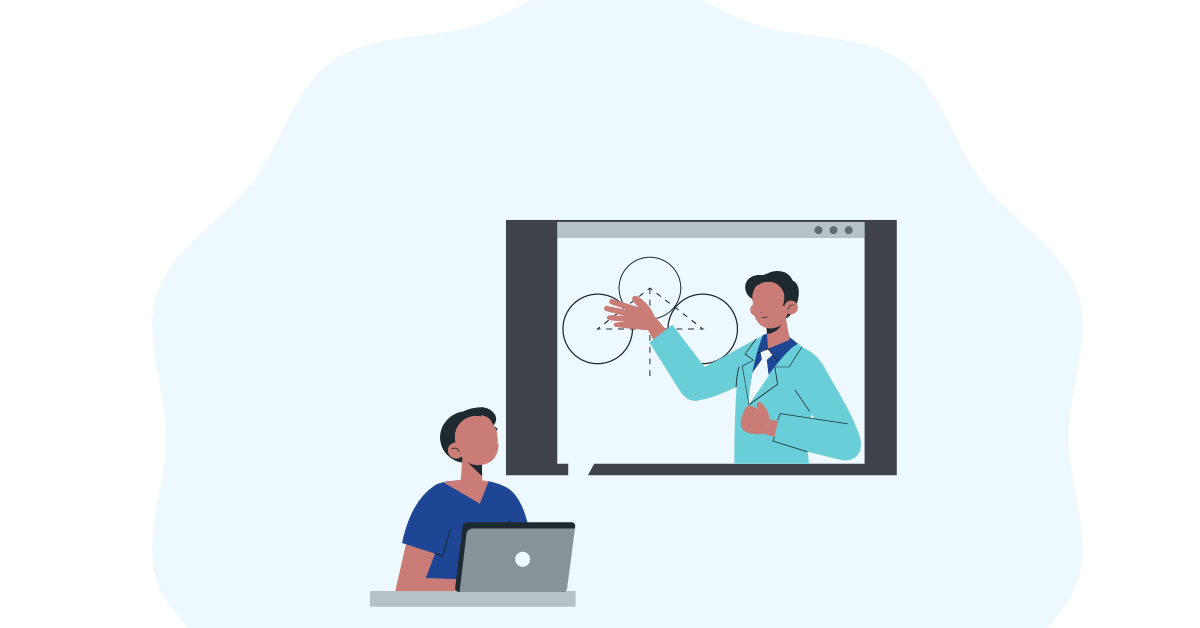Beyond the Classroom: Insights-led Engagement for Ed-Tech


Hurdles Impeding Increased Learner Engagement for Ed-Tech Brands at Each Stage of the Lifecycle
Discover how you can increase course completion, free-to-paid customers and student retention. Get your hands on ready-to-use templates to fuel your personalisation strategies
Get the EBookKey Trends Propelling the Growth of Online Learning
Discover how you can increase course completion, free-to-paid customers and student retention. Get your hands on ready-to-use templates to fuel your personalisation strategies
Get the EBookHow can Ed-Tech Brands Increase Parent, Teacher, and Student Retention and Engagement?
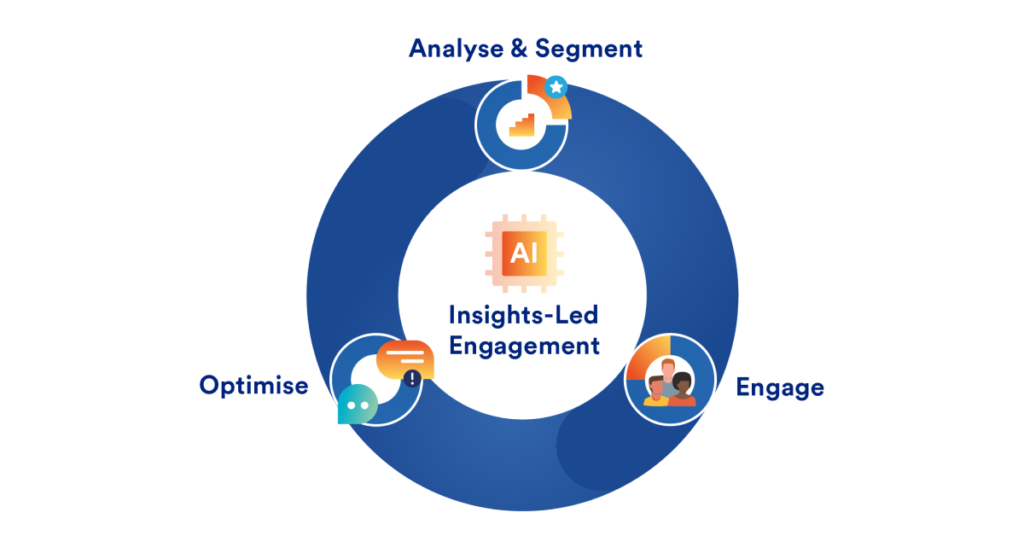
Whether your goal is, increasing engagement, keeping learners motivated, retention or converting free customers to paid ones, it is crucial to capitalise on each micro-moment in the customer journey and personalise communication based on their interest, progress and friction points. This engagement approach let’s customer, journey and campaign data dictate and continuously optimise your strategy for engagement and conversations.
Here are examples of customer, journey and campaign data that Ed-Tech marketing leaders can capture to increase sign-ups, increased participation, course completion and successful prolonged engagement:
Examples of Customer Insight:
- Content, course categories or modules your students love
- Students preparing for specific competitive exams and tests
- Customer sets that have responded to and participated in promotions and discount campaigns
- Customer sets that might go dormant before course completion
- Customer sets that might churn after completing one course
- Time of day, my student, parent or teacher is most responsive
- Channels they respond to social media, push notifications, website and more
Examples of Journey Insight:
- What points in the journey contribute to the most lost students and teachers
- How are students and parents navigating inside your website or mobile app?
- Which customer cohorts are NOT converting?
- What steps in your customer journey are leading to high churn?
Examples of Campaign Insight:
-
- Which customer segments are engaged well and which aren’t for a specific campaign?
- Are we sending too many notifications to our customers? If yes, which set of customers are these?
- What is the long-term impact on customers who are engaging with your campaigns?
How Vedantu, a Leading Ed-Tech Brand, Increased Student Retention and Engagement by 15%
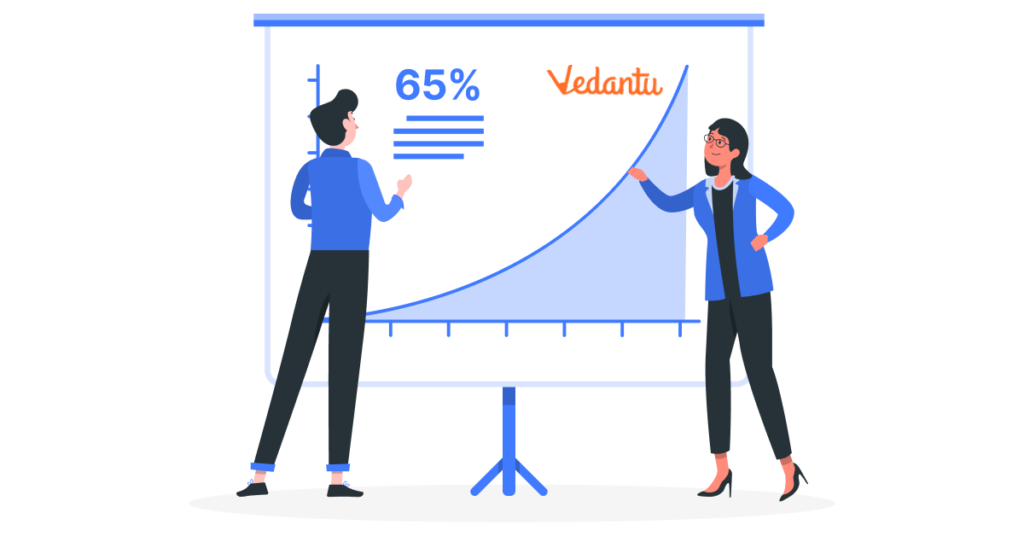
Vedantu, a tutoring platform and a pioneer in LIVE learning content faced a problem of 90% of students adding tutorials to their cart but not completing the transaction. The biggest hurdle to tackling this challenge and increasing student engagement was missing data on learner behaviour and app activity.
By onboarding a single platform to capture customer activity, demographic and behavioural data across campaigns, they were able to view the learner journey from sign-up to tutorial completion and achieve impressive results like:
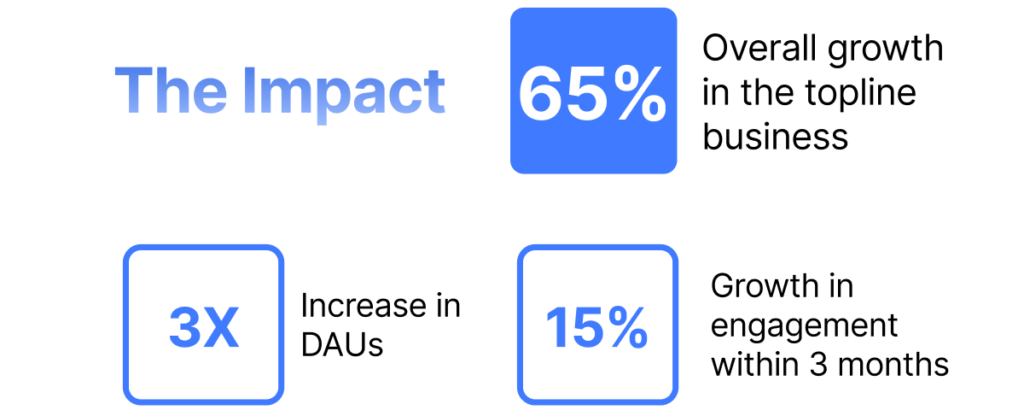
Discover how you can increase course-completion, free-to-paid customers and student retention. Get your hands on ready-to-use templates to fuel your personalisation strategies
Get the EbookFrequently Asked Questions
Why should Ed-Tech brands focus on student engagement and retention?
With around 4500+ global players competing in the Ed-Tech space, it becomes clear that acquiring new customers isn’t child’s play. The number of players in the Ed-Tech market is constantly on the rise, and more unique niches are emerging to solve unconventional educational problems, which makes acquiring a new customer an expensive activity. The increased competition pushes Ed-Tech brands to focus on retention and provide value to their existing customers to reduce churn. As a final word, here are three key reasons to focus on engaging with your current customer and working towards retention: Retaining a customer costs lesser than acquiring a new one Personalisation is not only necessary for effectively teaching a virtual classroom but also to create impactful engagement strategies Paying attention to the most active segment of your customer leads to better conversions.
Why is it essential for marketers to create customer engagement in Edtech Brands?
We’ve realised the benefits of a balanced approach between engagement and acquisition for Ed-Tech platforms in facilitating a prolonged conversation. When we talk about why customer engagement strategies are essential, the cost of acquiring new students and educators amidst the constantly increasing competition is one example of why an acquisition focussed approach is detrimental to monetary resources.
How to increase learner engagement?
While marketers experiment with different ways and tips to create frictionless engagement and motivate conversations in a virtual classroom, here are three pillars ways to ensure participation. Analyse and segment: Moving from a campaign-centric to a customer-centric is key to delivering a better experience to your customer. The first step towards achieving this objective is to analyse customer behaviour and discern which customer set needs engagement, what type of campaigns will be effective, and how can the platform be improved to provide a delightful customer experience. Engage: The next step is to build personalised campaigns to provide a relevant experience to each customer. Marketers should strive to build such personalised campaigns at scale across channels like email, push notifications, in-app messages, website, SMS and more. Optimise: The last step is consistently optimising campaigns across channels leveraging Artificial intelligence and Machine Learning. This flywheel approach of constantly analysing, engaging and optimising ensures maximum optimising reachability and conversions.
What are the 2 top prerequisites to create successful learner engagement strategies?
An efficient engagement journey starts with understanding the customer journey. Your customers expect a hyper-personalised experience across channels. Receiving impersonal communication about offerings that don’t interest them is an excellent way to lose the customer. With MoEngage Flows, ed-tech brands can design marketing automation flows that are easy to create, visualise and deploy across channels. From onboarding new customers to earning referrals from existing ones, Flows takes care of all customer touchpoints. Advanced Custom Segmentation is another way to accurately segment and engage your customers based on customer events (for example, completed a course in the last 7 days) and derived user attributes (for example, located in Germany). Such custom segments help you design high-performing engagement campaigns with ease.




